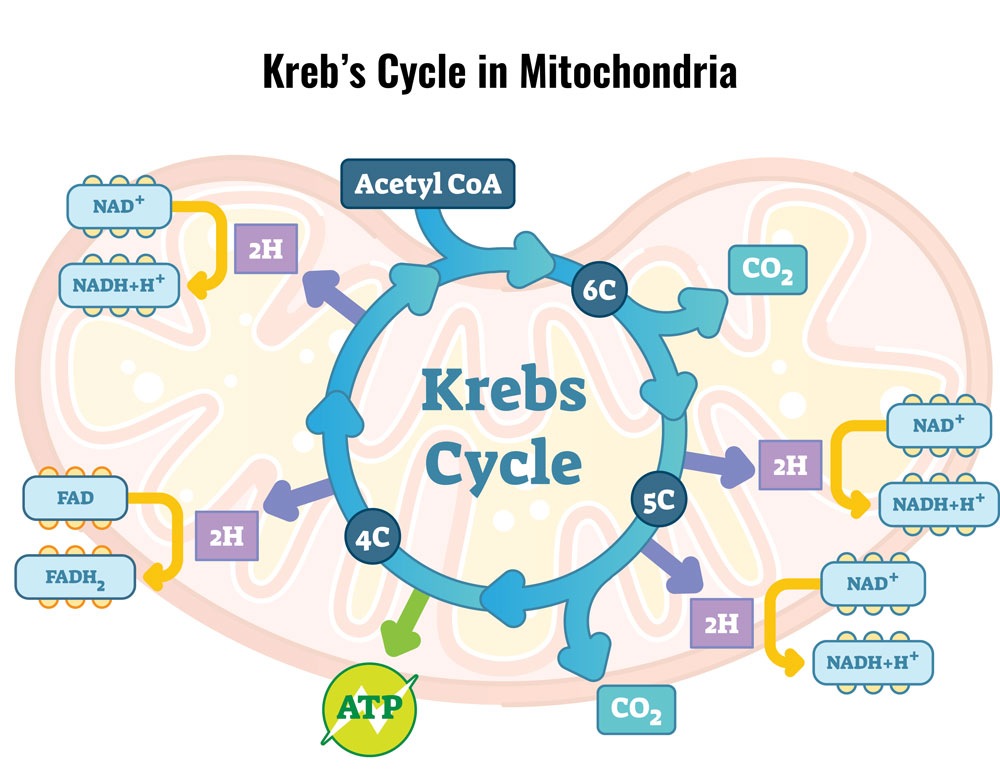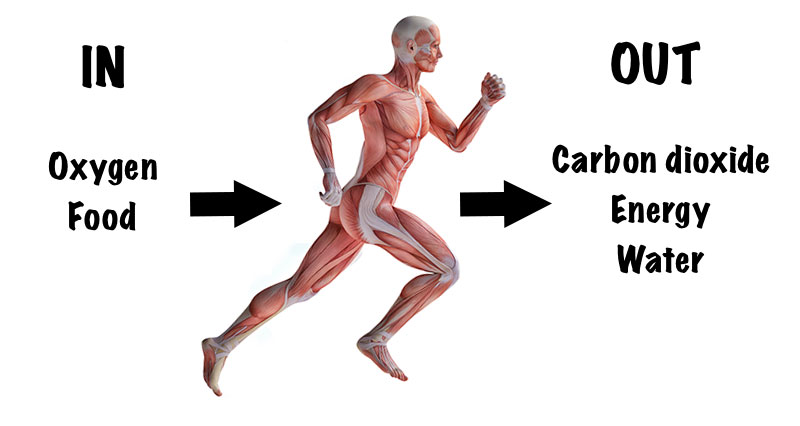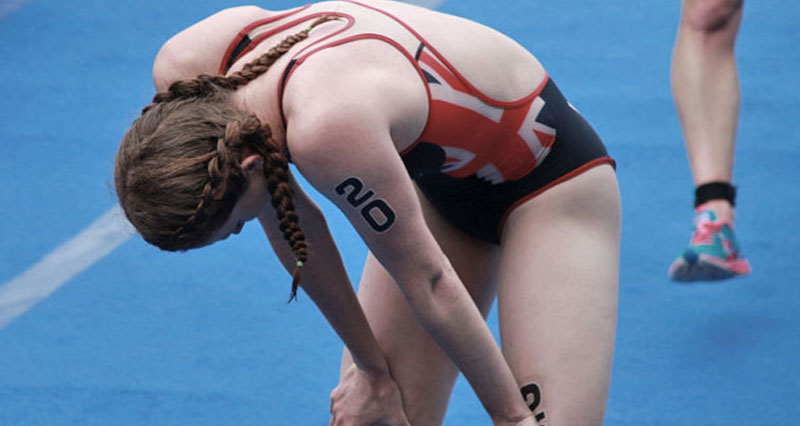Aerobic respiration means ‘with oxygen’ and occurs when the body produces energy from chemical reactions using oxygen. The Krebs cycle is part of aerobic metabolism.
You can sustain aerobic exercise for as long as breathing supplies your lungs with enough oxygen. However, when you begin exercising your body cannot deliver oxygen fast enough for the complex reactions of aerobic metabolism. Therefore it relies on anaerobic respiration for the first couple of minutes.
As your body adjusts to steady state exercise, the aerobic system predominantly takes over.
The aerobic system
The aerobic system converts energy for exercise into three phases.
- Glycolysis
- Krebs Cycle
- Electron Transport Chain (ETC)
Aerobic Glycolysis
Glycolysis is the breakdown of Carbohydrates (in the form of Glucose or Glycogen) into Pyruvic acid and two ATP molecules.
Converting Carbohydrates into Pyruvic acid uses a total of 10 chemical reactions. These take place in the muscle Sarcoplasm, a gelatine-type substance in the muscle fibres. Glycolysis takes place without the presence of oxygen in the cells.
However, on finishing Glycosis the cell then decides which process to carry out. If Oxygen is present then the cell uses aerobic respiration (with oxygen) and then continues on to Krebs Cycle.
Krebs Cycle
The Krebs cycle (Citric acid or Tricarboxylic acid cycle) is the second phase of aerobic respiration.

The Pyruvic acid produced during Glycolysis enters the mitochondria and immediately converts to Acetyl Coenzyme A. Mitochondria are the cell’s powerhouses that produce energy.
This combines with Oxaloacetic acid to form a 6-carbon compound, known as Citric acid. Further chemical reactions occur to wield enough energy to resynthesise 2 ATP molecules.
Bi-products of these reactions include Carbon Dioxide (exhaled by the lungs), and Hydrogen. Carrier molecules NAD+ and FAD transport hydrogen to the site of the Electron Transport Chain.
The process is termed a cycle because the starting product Oxaloacetic acid is also the end product. Therefore, ready to start the process over again.
Electron Transport Chain
The hydrogen from the Krebs cycle passes into the inner membranes of the Mitochondria where it splits into a proton (H+) and an electron (H-).
The electrons are then subject to a series of redox reactions which release a large amount of energy in order to resynthesise ATP.
The protons also create energy by moving back through the inner membrane of the Mitochondria because of the redox reactions. This causes an imbalance of H+ and so they return through the membrane, producing energy.
A final exothermic reaction is the combination of hydrogen with oxygen, to form water. The total ATP production during all of the reactions of the electron transport chain is 34, meaning it is by far the highest-producing phase of aerobic metabolism.
Aerobic Respiration Equation:
Glucose + Oxygen = Carbon Dioxide + Water + Energy
| C6H12O6 | + | 6O2 | = | 6CO2 | + | 6H2O | + | Energy |







